Planting tulips is a must-do on my fall garden tasks. To have beautiful spring colour, you have to put in the work months in advance. Here’s how to figure out what kind of perennial tulips to plant and when to plant them based on where you live.
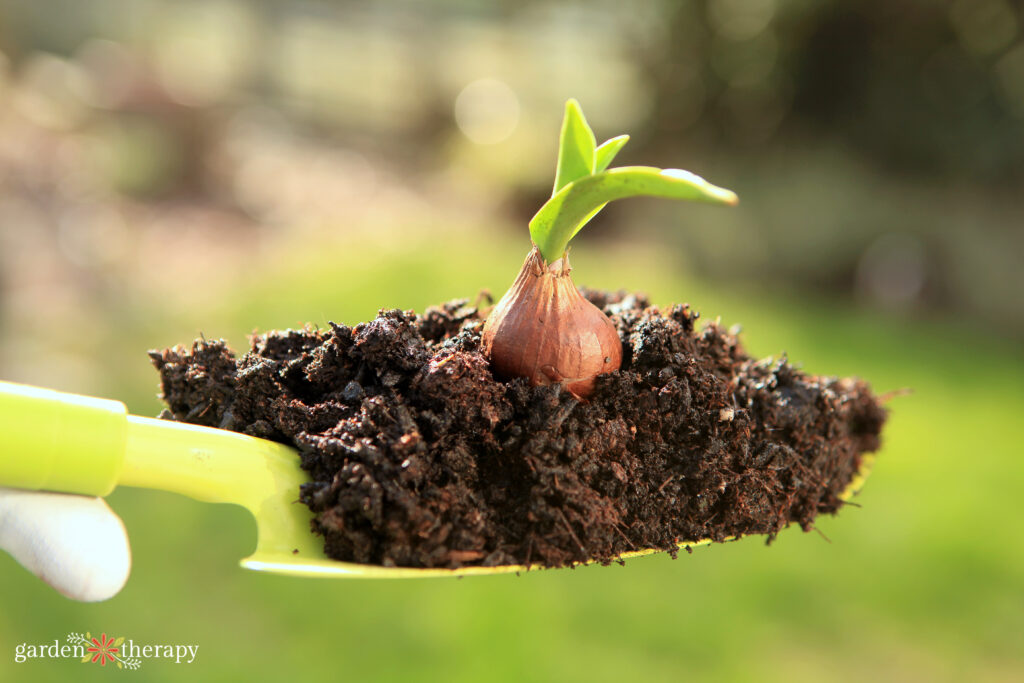
Every fall, I give my future self a little gift. Vancouver skies are cloudy and rainy almost all winter long. By late February and early March, we begin to see hints of spring, which completely revitalizes my spirit.
One of the heralds of spring are tulips and other spring flowering bulbs. When we’ve been living in such a lack of colour, confined inside for the past few months, colour can instantly bring much-needed outdoor serotonin and dopamine.
What’s even better than planting tulips is planting perennial tulips. These are tulips that haven’t lost the ability to return year after year, giving you a steady rainbow of colour with minimal work.
So, think into the future and give yourself some joy by planting perennial tulips in the fall. Here’s what you need to know.
This post will cover…
- Choosing Perennial Bulbs
- Naturalizing Tulips
- When to Plant Perennial Tulip Bulbs
- How to Plant Perennial Tulips
- How Deep to Plant Perennial Bulbs
- Perennial Tulips Care
- Common Perennial Tulip Pests
- Frequently Asked Questions About Planting Tulips
- More Tips for Growing Flower Bulbs
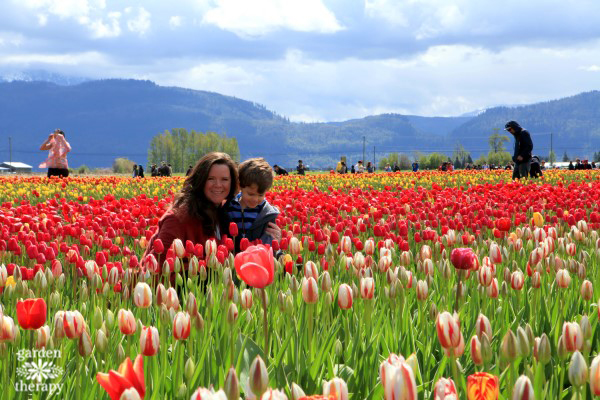
Choosing Perennial Bulbs
While technically, all tulips should be perennials, that won’t always be the case. After years of breeding and hybridizing tulips for big blooms and sturdy stems, they’ve lost their perennial trait. This is why most people treat tulips as annuals and be pleasantly surprised if they return the following year.
But! You can purposefully grow tulips as perennials—you just need to ensure you’re buying the right bulbs.
When shopping for bulbs, look for words like perennializing and naturalizing tulips. Also, pay attention to the bloom times (early, mid, late) and try to pick a few varieties to have an extended season of tulip blooms.
There are many different types of tulips (which you can learn more about in this post), but here are some of the best perennial tulips:
- Darwin Hybrid
- Greigii
- Kafmanniana
- Fosteriana
- Species/botanical (these are smaller and more closely resemble the original wild tulip)
It’s important to note that tulips are only perennials in their ideal conditions. Typically best in zones 3-8, they need cold winters, spring moisture, a sunny location, and good drainage. Tulips are native to Central Asia, so their ideal conditions may not match everywhere.
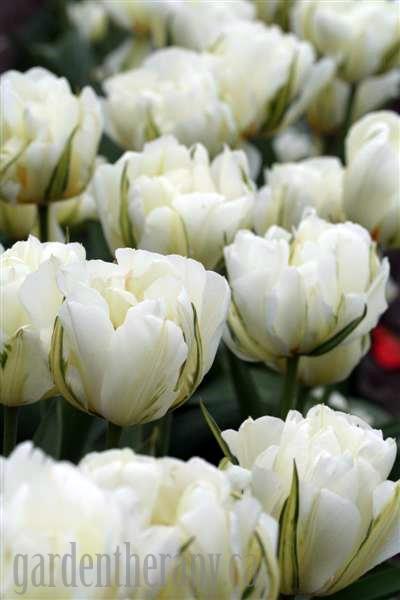
Naturalizing Tulips
Naturalizing tulips takes it one step further than perennials. While some tulips will return for several years, tulips that have naturalized will not only continuously return but also multiply.
The best tulips for naturalizing are Species, Fosteriana, and Kaumanniana. For more tips on naturalizing bulbs, check out this post.
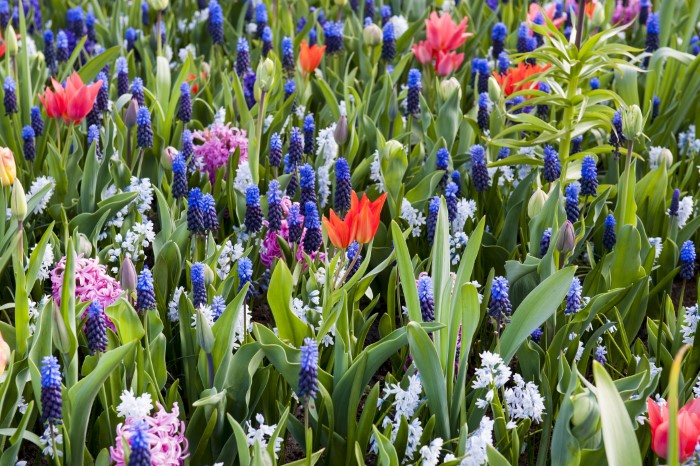
When to Plant Perennial Tulip Bulbs
Like most gardening advice, when to plant tulip bulbs depends on where you live. For those with very harsh winters, you’re looking as early as mid-September, and for those with warmer climates, as late as mid-December. For most, October to November is best.
For me, in zone 7-8, the ideal time is early October. Don’t get too hung up on a date, but know that you want to get them in the ground before the first frost. They must be in the ground before it freezes for the first time to establish themselves beforehand. The ideal temperature for planting tulips is 9⁰C/50⁰F.
Tulips need to go through a cold period, so if you don’t get them in the ground before it freezes, then it may be best to grow them in containers instead.
Try to plant your tulips relatively soon after you buy them. If you need to store them, keep them somewhere cool and dry. But the longer you store them, the more likely they are to dry out while waiting for you to plant them.
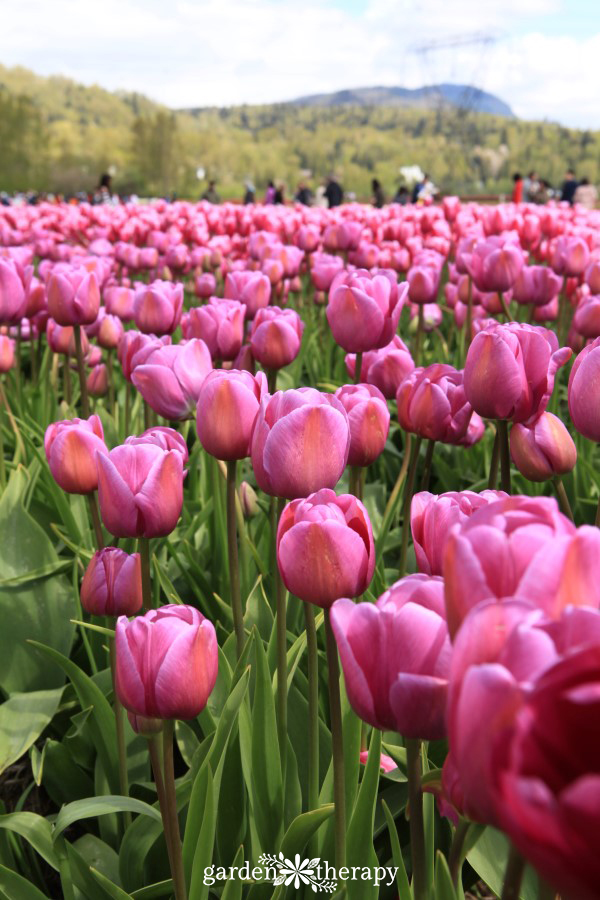
How to Plant Perennial Tulips
Tulips like loose, rich soil with good drainage. They can grow in sun and shade, but full sun will give you the best odds of tulips perennializing. But I always like to remind people that in the spring, the garden gets a lot more sunshine than you think because the deciduous trees are often still bare when the tulips begin to come out.
Plant the tulips with the roots facing down and the pointy part up. I like to put them in groupings of odd numbers, like 5 or 9, for a more natural display. But ensure they’re still spaced out enough from each other to have enough room to grow.
To speed things up, I like to use a power planter. This is especially helpful if you’re planting lots of bulbs for naturalizing. It really saves your wrist and lessens the time.
After planting the tulips, water them. This will stimulate root growth and help them develop better. They need to establish themselves in the ground before the soil freezes.
Mark where you have planted the tulips and add a layer of mulch, such as leaves or pine needles, to protect the tulips during the winter.
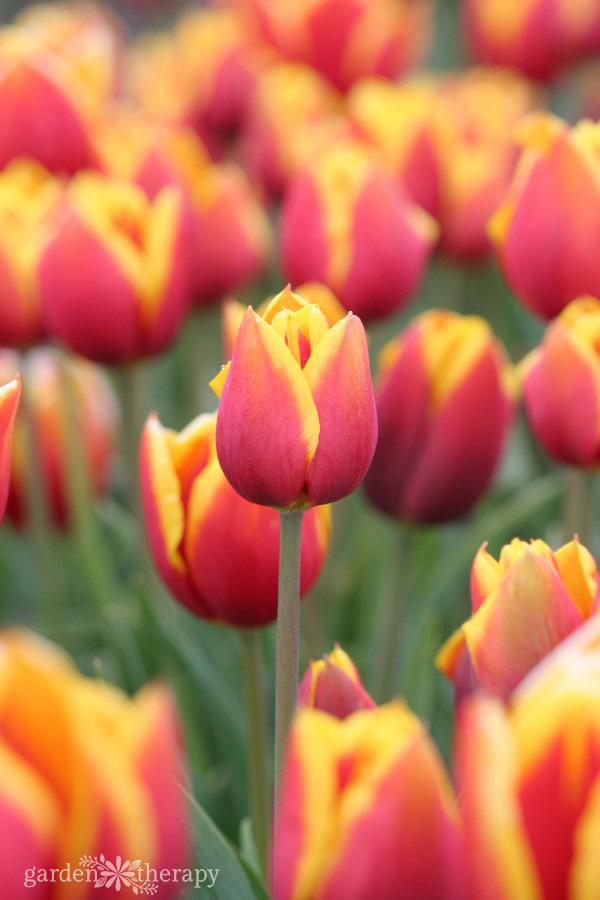
How Deep to Plant Perennial Bulbs
Generally, the recommendation is to plant bulbs 2-3 times the bulb’s height. Personally, I think it’s best to plant them even deeper, especially in colder climates.
First, look at the planting instructions and then always plant on the deeper side if they give a range. If they don’t give any indication, aim for three times the bulb’s height or slightly deeper if you live in a cold climate. Covering with mulch after planting can also help.
Once again, the power planter helps you easily get deep enough.
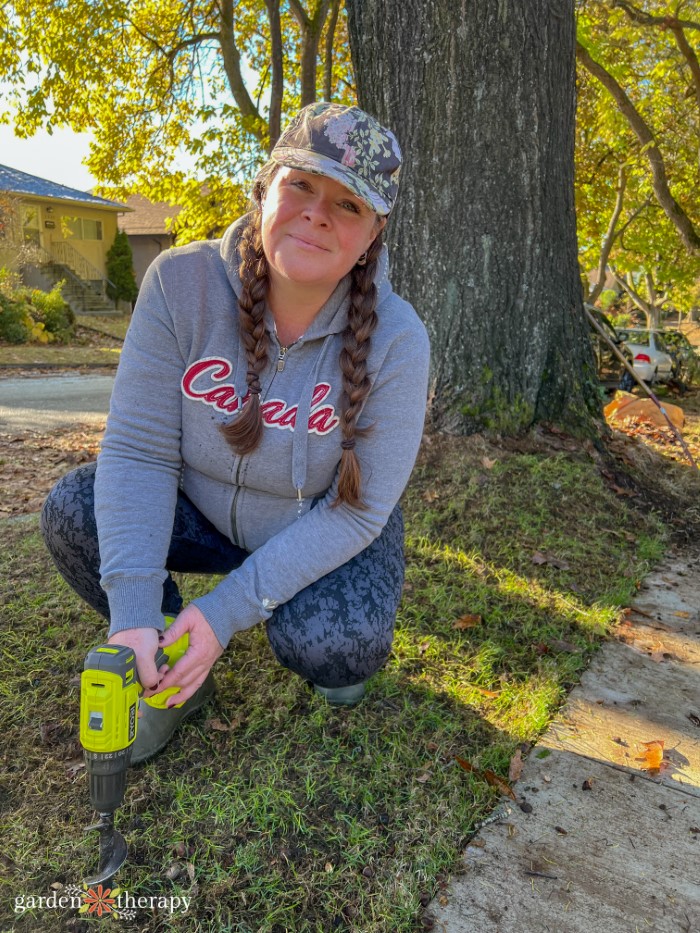
Perennial Tulips Care
Once planted, you don’t have to do much with your bulb but wait for the pop of spring colour to arrive.
You can deadhead the flowers or cut them and bring them inside, but I recommend letting them stay on to increase the risk of them returning as a perennial.
Whatever you do, leave behind the foliage—that’s essential for the plant to recharge the bulb so it can return the following year.
Another thing I like to do is take reference photos. This way, you can remember where you planted the bulbs in case you want to add more later, as well as other plants.
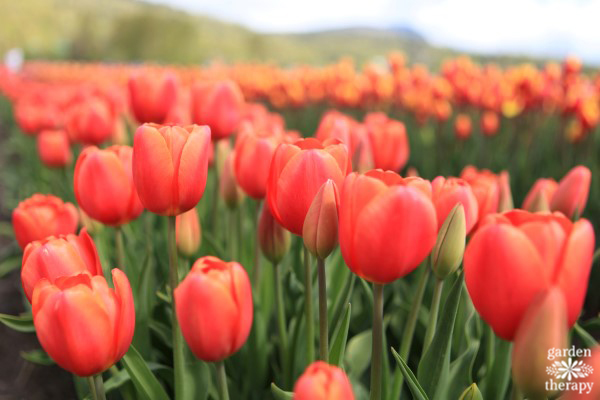
Common Perennial Tulip Pests
The biggest problem you’ll encounter with perennial tulips is squirrels. I had many squirrels feast on the bulbs I naturalized last year, but I planted enough that I didn’t mind sharing some of them. You can see them in the video below!
However, if you want to stop squirrels and other rodents, you can cover the area after planting with a layer of chicken wire or hardware cloth. Then, secure the wire to the ground with landscape pins or large rocks. You can top it off with mulch if you want to hide the appearance for the winter.
This will prevent the rodents from digging out the bulbs. Remember that you must remove the covering before the bulb pops up in the spring.
If you’re dealing with voles or groundhogs, you can add gravel to the bottom of your hole when planting. Add soil and the bulb, ensuring the soil surrounds the bulb. Then, add another protective layer of gravel.
Deer can also be a problem. My biggest recommendation is to mix the tulips with daffodils since they won’t eat them and plant them closer to the house, where the deer may feel less inclined to go.
Frequently Asked Questions About Planting Tulips
Only perennial tulips like Darwin Hybrid, Species, Greigii, Fosteriana, and Kafmanniana will return. These tulips are considered perennial bulbs in zones 3-8. They need cold to flower, so warmer climates may not see the return of tulips they purchased as starts in pots.
Make sure to leave the leaves of the bulb intact. These leaves energize the bulb and ensure it recharges to bloom again the following year.
Tulips should be planted about 2-3 times the height of their bulb or even deeper in colder climates. Some varieties may differ in how deep they should be planted, so follow the instructions on the pack, always leaning towards the deepest number suggested.
If you plant tulips in the spring, you may get flowers, but you may not. The earlier in the spring, the better. We plant them in the fall so they have time to establish roots before getting the cold they need to bloom.
So without that head start forming a root system, the tulips planted in the spring may not end up blooming or have less impressive flowers.
If you missed your chance in the fall to plant tulips, you can try to plant them as soon as the ground is workable. Or, you can try forcing the bulbs indoors instead.
I would suggest that you buy potted tulips from the garden centre instead. Leave them in the pot to enjoy while they bloom, and then once the leaves start to yellow, move them into the ground. They may return the following year!


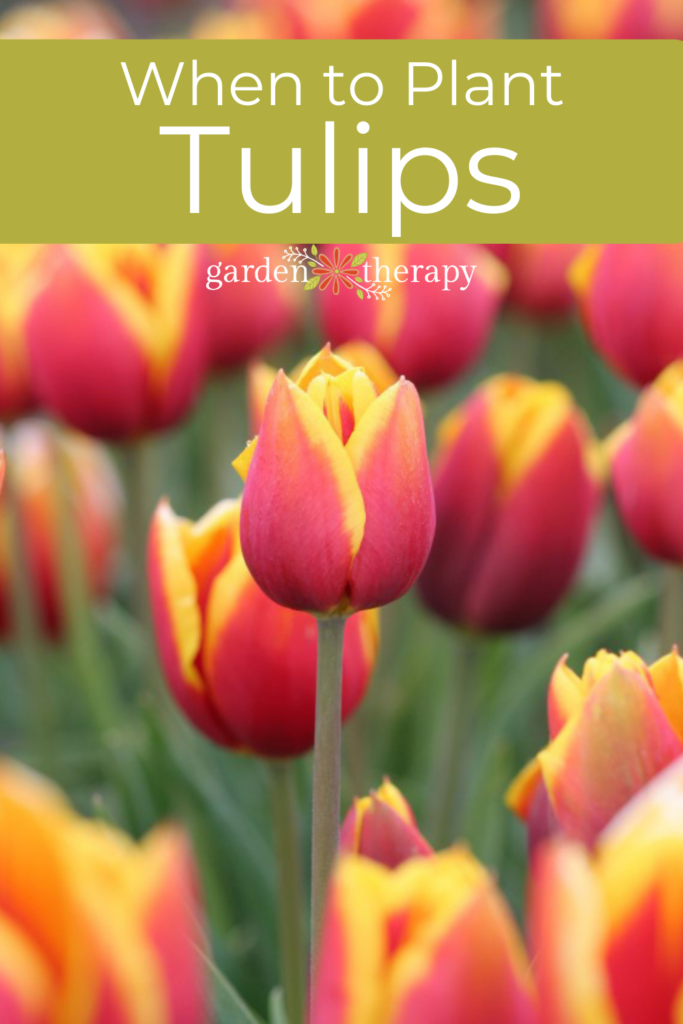



I like your writing about Tulip. Its really interesting. you have also nice pictures. Do you like to make a photo album?